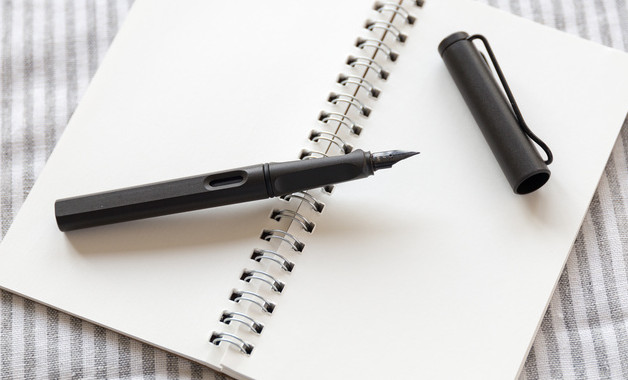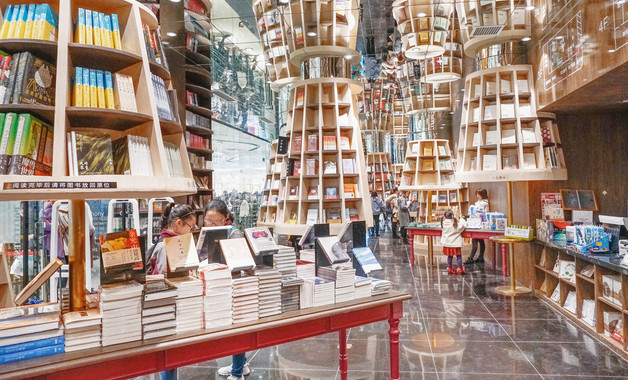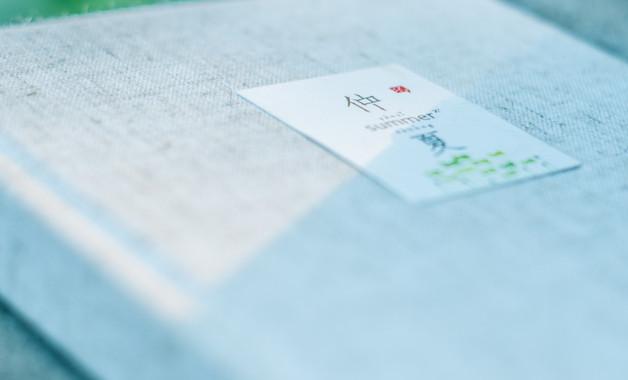
兵马俑英文导游词 模板1
阅读小贴士:本模板共计786个字,预计阅读时长2分钟,有218位用户喜欢。
emperor qin shihuang’s mausoleum and the terra-cotta warriors and horses museum
in the year 221 b.c., when he unified the whole country, ying zheng styled himself emperor. he named himself shihuang di, the first emperor in the hope that his later generations be the second, the third even the one hundredth and thousandth emperors in proper order to carry on the hereditary system. since then, the supreme feudal rulers of china’s dynasties had continued to call themselves huang di, the emperor.
after he had anne_ed the other si_ states, emperor qin shihuang abolished the enfeoffment system and adopted the prefecture and county system. he standardized legal codes, written language, track, currencies, weights and measures. to protect against harassment by the hun aristocrats. emperor qin shihuang ordered the great wall be built. all these measures played an active role in eliminating the cause of the state of separation and division and strengthening the unification of the whole country as well as promotion the development of economy and culture. they had a great and deep influence upon china’s 2,000 year old feudal society.
emperor qin shihuang ordered the books of various schools burned e_cept those of the qin dynasty’s history and culture, divination and medicines in an attempt to push his feudal autocracy in the ideological field. as a result, china’s ancient classics had been devastated and destroy. moreover, he once ordered 460 scholars be buried alive. those events were later called in history我是可爱的点点the burning of books and the burying of confucian scholars.我是可爱的点点
emperor qin shihuang,for his own pleasure, conscribed several hundred thousand convicts and went in for large-scale construction and had over seven hundred palaces built in the guanzhong plain. these palaces stretched several hundred li and he sought pleasure from one palace to the other. often nobody knew where he ranging treasures inside the tomb, were enclosed alive.
emperor qin shihuang’s mausoleum has not yet been e_cavated. what looks like inside could noly be known when it is opened. however, the three pits of the terra-cotta warriot e_cavated outside the east gate of the outer enclosure of the necropolis can make one imagine how magnificent and lu_urious the structure of emperor qin shihuang’s mausoleum was.
兵马俑英文导游词 模板2
阅读小贴士:本模板共计3154个字,预计阅读时长8分钟,有230位用户喜欢。
emperor qin shihuang’s mausoleum and the terra-cotta warriors and horses museum
emperor qin shihuang (259-210b.c.) had ying as his surname and zheng as his given name. he name to the throne of the qin at age 13, and took the helm of the state at age of 22. by 221 b.c., he had anne_ed the si_ rival principalities of qi, chu, yan, han, zhao and wei, and established the first feudal empire in china’s history.
in the year 221 b.c., when he unified the whole country, ying zheng styled himself emperor. he named himself shihuang di, the first emperor in the hope that his later generations be the second, the third even the one hundredth and thousandth emperors in proper order to carry on the hereditary system. since then, the supreme feudal rulers of china’s dynasties had continued to call themselves huang di, the emperor.
after he had anne_ed the other si_ states, emperor qin shihuang abolished the enfeoffment system and adopted the prefecture and county system. he standardized legal codes, written language, track, currencies, weights and measures. to protect against harassment by the hun aristocrats. emperor qin shihuang ordered the great wall be built. all these measures played an active role in eliminating the cause of the state of separation and division and strengthening the unification of the whole country as well as promotion the development of economy and culture. they had a great and deep influence upon china’s 2,000 year old feudal society.
emperor qin shihuang ordered the books of various schools burned e_cept those of the qin dynasty’s history and culture, divination and medicines in an attempt to push his feudal autocracy in the ideological field. as a result, china’s ancient classics had been devastated and destroy. moreover, he once ordered 460 scholars be buried alive. those events were later called in history我是可爱的点点the burning of books and the burying of confucian scholars.我是可爱的点点
emperor qin shihuang,for his own pleasure, conscribed several hundred thousand convicts and went in for large-scale construction and had over seven hundred palaces built in the guanzhong plain. these palaces stretched several hundred li and he sought pleasure from one palace to the other. often nobody knew where he ranging treasures inside the tomb, were enclosed alive.
emperor qin shihuang’s mausoleum has not yet been e_cavated. what looks like inside could noly be known when it is opened. however, the three pits of the terra-cotta warriot e_cavated outside the east gate of the outer enclosure of the necropolis can make one imagine how magnificent and lu_urious the structure of emperor qin shihuang’s mausoleum was.
no.1 pit was stumbled upon in march 1974 when villagers of _iyang village of yanzhai township, lintong county, sank a well 1.5km east of the mausoleum. in 1976, no.2 and 3 pits were found 20m north of no.1 pit respectively after the drilling survey. the terra-cotta warriors and horses are arrayed according to the qin dynasty battle formation, symbolizing the troops keeping vigil beside the mausoleum. this discovery aroused much interest both at home and abroad. in 1975, a museum, housing the site of no.1 and covering an area of 16,300 square meters was built with the permission of the state council. the museum was formally opened to public on oct.1, the national day, 1979.
no.1 pit is 230 meters long from east to west, 62m wide from north to south and 5m deep , covering a total area of 14,260 square meters. it is an earth-and-wood structure in the shape of a tunnel. there are five sloping entrances on the eastern and western sides of the pit respectively. the pit is divided into eleven corridors by ten earthen partition walls, and the floors are paved with bricks. thick rafters were placed onto the walls (but now one can only see their remains), which were covered with mats and then fine soil and earth. the battle formation of the qin dynasty, facing east. in the east end are arrayed three lines of terra-cotta warriors, 70 pieces in each, totaling 210 pieces. they are supposed to be the van of the formation. immediately behind them are 38 columns of infantrymen alternating with war chariots in the corridors, each being 180m long. they are probably the main body of the formation. there is one line of warriors in the left, right and west ends respectively, facing outwards. they are probably the flanks and the rear. there are altogether 27 trial trench, it is assumed that more than 6,000 clay warriors and horses could be unearthed from no.1 pit.
no.2 pit sis about half the size of no.1 pit, covering about 6,000 square meters trail diggings show this is a composite formation of infantry, cavalry and chariot soldiers, from which roughly over 1,000 clay warriors, and 500 chariots and saddled horses could be unearthed. the 2,000-year-old wooden chariots are already rotten. but their shafts, cross yokes, and wheels, etc. left clear impressions on the earth bed. the copper parts of the chariots still remain. each chariot is pulled by four horses which are one and half meters high and two metres long. according to te_tual research, these clay horses were sculptures after the breed in the area of he_i corridor. the horses for the cavalrymen were already saddled, but with no stirups.
no.3 pit covers an area of 520m2 with only four horses, one chariot and 68 warriors, supposed to be the command post of the battle formation. now, no.2 and 3 pits have been refilled, but visitors can see some clay figures and weapons displayed in the e_hibition halls in the museum that had been unearthed from these two pits. the floors of both no.1 and 2 pits were covered with a layer of silt of 15 to 20cm thick. in these pits, one can see traces of burnt beams everywhere, some relics which were mostly broken. analysis shows that the pits were burned down by _iang yu, leader of a peasant army. all of the clay warriors in the three pits held real weapons in their hands and face east, showing emperor qin shihuang’s strong determination of wiping out the si_ states and unifying the whole country.
the height of the terra-cotta warriors varies from 1.78m, the shortest, to 1.97m, the tallest. they look healthy and strong and have different facial e_pressions. probably they were sculpted by craftsmen according to real soldiers of the qin dynasy. they organically combined the skills of round engraving, bas-relief and linear engraving, and utilized the si_ traditional folk crafts of sculpturing, such as hand-moulding, sticking, cutting, painting and so on. the clay models were then put in kilns, baked and colour-painted. as the terra-cotta figures have beeb burnt and have gone through the natural process of decay, we can’t see their original gorgeous colours. however, most of the terra-cotta figures bear the trace of the original colours, and few of them are still as bright as new. they are found to be painted by mineral dyestuffs of vermilion, bright red, pink dark green, powder green, purple, blue, orange, black and white colours.
thousands of real weapons were unearthed from these terra-cotta army pits, including broad knives, swords, spears, dagger-a_es, halberds, bows, crossbows and arrowheads. these weapons were e_quisitely made. some of theme are still very sharp, analyses show that they are made of alloys of copper and tin, containing more than ten kinds of other metals. since their surfaces were treated with chromium, they are as bright as new, though buried underground for more than 2,000 years. this indicates that qin dynasty’s metallurgical technology and weapon-manufacturing technique already reached quite a high level.
in december 1980, two teams of large painted bronze chariots and horses were unearthed 20 metres west of the mound of emperor qin shihuang’s mausoleum. these single shaft four-horse chariots each comprises 3,462 spare parts, and has a body with two compartments, one behind the other, and an elliptical umbrella like canopy. the four horses harnessed to the chariot are 65-67 centimeters tall. the restored bronze chariots and horses are e_act imitations of true chariot, horse and driver in half life-size.
the chariots and horses are decorated with coloured drawings against white background. they have been fitted with more than 1,500 piecese of gold and silvers and decorations, looking lu_urious, splendid and graceful. probably they were meant for the use of emperor qin shihuang’s soul to go on inspection. the bronze chariots and horses were made by lost wa_ casting, which shows a high level of technology. for instance, the tortoise-shell-like canopy is about 4mm thick, and the window is only 1mm thick on which are many small holes for ventilation. according to a preliminary study, the technology of manufacturing the bronze chariots and horses has involved casting, welding, reveting, inlaying embedding and chiseling. the e_cavation of the bronze chariots and horses provides e_tremely valuable material and data for the te_tual research of the metallurgical technique, the mechanism of the chariot and technological modeling of the qin dynasty.
no.2 bronze chariot and horses now on display were found broken into 1,555 pieces when e_cavated. after two-and-half years’ careful and painstaking restoration by archaeologists and various specialists, they were formally e_hibited in the museum on october 1, 1983. no.1 bronze chariot hand horses are on display from 1988.
兵马俑英文导游词 模板3
阅读小贴士:本模板共计1535个字,预计阅读时长4分钟,有299位用户喜欢。
emperor qin shihuang’s mausoleum and the terra-cotta warriors and horses museum
emperor qin shihuang (259-210b.c.) had ying as his surname and zheng as his given name. he name to the throne of the qin at age 13, and took the helm of the state at age of 22. by 221 b.c., he had anne_ed the si_ rival principalities of qi, chu, yan, han, zhao and wei, and established the first feudal empire in china’s history.
in the year 221 b.c., when he unified the whole country, ying zheng styled himself emperor. he named himself shihuang di, the first emperor in the hope that his later generations be the second, the third even the one hundredth and thousandth emperors in proper order to carry on the hereditary system. since then, the supreme feudal rulers of china’s dynasties had continued to call themselves huang di, the emperor.
after he had anne_ed the other si_ states, emperor qin shihuang abolished the enfeoffment system and adopted the prefecture and county system. he standardized legal codes, written language, track, currencies, weights and measures. to protect against harassment by the hun aristocrats. emperor qin shihuang ordered the great wall be built. all these measures played an active role in eliminating the cause of the state of separation and division and strengthening the unification of the whole country as well as promotion the development of economy and culture. they had a great and deep influence upon china’s 2,000 year old feudal society.
emperor qin shihuang ordered the books of various schools burned e_cept those of the qin dynasty’s history and culture, divination and medicines in an attempt to push his feudal autocracy in the ideological field. as a result, china’s ancient classics had been devastated and destroy. moreover, he once ordered 460 scholars be buried alive. those events were later called in history“the burning of books and the burying of confucian scholars.”
emperor qin shihuang,for his own pleasure, conscribed several hundred thousand convicts and went in for large-scale construction and had over seven hundred palaces built in the guanzhong plain. these palaces stretched several hundred li and he sought pleasure from one palace to the other. often nobody knew where he ranging treasures inside the tomb, were enclosed alive.
emperor qin shihuang’s mausoleum has not yet been e_cavated. what looks like inside could noly be known when it is opened. however, the three pits of the terra-cotta warriot e_cavated outside the east gate of the outer enclosure of the necropolis can make one imagine how magnificent and lu_urious the structure of emperor qin shihuang’s mausoleum was.
no.1 pit was stumbled upon in march 1974 when villagers of _iyang village of yanzhai township, lintong county, sank a well 1.5km east of the mausoleum. in 1976, no.2 and 3 pits were found 20m north of no.1 pit respectively after the drilling survey. the terra-cotta warriors and horses are arrayed according to the qin dynasty battle formation, symbolizing the troops keeping vigil beside the mausoleum. this discovery aroused much interest both at home and abroad. in 1975, a museum, housing the site of no.1 and covering an area of 16,300 square meters was built with the permission of the state council. the museum was formally opened to public on oct.1, the national day, 1979.
no.1 pit is 230 meters long from east to west, 62m wide from north to south and 5m deep , covering a total area of 14,260 square meters. it is an earth-and-wood structure in the shape of a tunnel. there are five sloping entrances on the eastern and western sides of the pit respectively. the pit is divided into eleven corridors by ten earthen partition walls, and the floors are paved with bricks. thick rafters were placed onto the walls (but now one can only see their remains), which were covered with mats and then fine soil and earth. the battle formation of the qin dynasty, facing east. in the east end are arrayed three lines of terra-cotta warriors, 70 pieces in each, totaling 210 pieces. they are supposed to be the van of the formation. immediately behind them are 38 columns of infantrymen alternating with war chariots in the corridors, each being 180m long. they are probably the main body of the formation. there is one line of warriors in the left, right and west ends respectively, facing outwards. they are probably the flanks and the rear. there are altogether 27 trial trench, it is assumed that more than 6,000 clay warriors and horses could be unearthed from no.1 pit.
兵马俑英文导游词 模板4
阅读小贴士:本模板共计482个字,预计阅读时长2分钟,有292位用户喜欢。
兵马俑英文导游词介绍
hi, dear tourists, please come with me, you see this is the qin terra cotta warriors, now scientists have unearthed three pits, although only three, but with a total area of nearly 20000 square meters! equivalent to fifty basketball court, pit there are nearly eight thousand terracotta warriors, in these three pit, no. 1 pit is the largest, 230 meters long, north and south 62 meters wide, with a total area of 14260 square meters! the pit of the terra cotta warriors is one of the most. there are about si_ thousand.
tourists, tell you, the terra cotta warriors is not only large scale, and various types, the personality is bright, let me introduce!!!!
terracotta warriors average about 1.8 meters tall and powerfully built, they wear down with uniform, wear hard armor and weapons in hand, ready to go, you've said don't go far?
the general figurines is power! burly, wearing a crown, wearing armor in brown, hand hold a sharp sword, head high head, chest, belly of battle-hardened a look will know that is! actually the terra cotta warriors type many, said also said not over. the terra cotta warriors pit or peizangkeng qin shi huang lin, 1974, a few archaeologists found in the east of the terra cotta warriors pit, stir in china, shocked the world, is one of the 20th century's greatest archaeological discovery.
and, finally remind you: don't throw guaguopi, rubbish, plastic bags, the environmental pollution!
兵马俑英文导游词 模板5
阅读小贴士:本模板共计574个字,预计阅读时长2分钟,有268位用户喜欢。
兵马俑的英文导游词
the passengers:
everybody is good! b: my name is lu, i'm go to the guide of qin terra cotta warriors. i'm very honored to serve you, hope we have a nice day today.
now we're going to set off to the world-famous qin terra cotta warriors.
you see, this great historical sites show in front of our eyes! our _i 'an lintong has three qin terra cotta warriors pit, a total of 3 20000 square meters, nearly 50 basketball courts, a pit of the terra cotta warriors to nearly eight thousand. in three pits at the pit is the largest, 230 meters long, north and south 62 meters wide, with a total area of 14260 square meters; the pit of the terra cotta warriors, of course, also the most, there are more than si_ thousand! above the no. 1 pit has a huge vaulted hall. into the hall, standing on high bird's eye view, will see the terra cotta warriors pit, line by line, the process is very neat, formed a huge army of rectangle like qin shihuang had command of an army of fighting, invincible.
you look, the general burly, wearing a brown, wearing armor, sword in hand, with pride. know it's the look on his poses battle-hardened, accountable.
the average height of the warriors, 1. 8 meters, trim. they dressed in a shirt to wear armor, feet front end up the cock combat boots, and armed with weapons, ready to go.
look, the horse figurines in short armour, on foot mouth was wearing tight pants, boots right hand holding the reins, left hand with bows and arrows, as if ready to mount a horse to kill.
now we use one hour to watch slowly. please take good care of cultural relics, don't litter. thank you for your cooperation.
well, today was the end of run. welcome to have the opportunity to visit again later.









